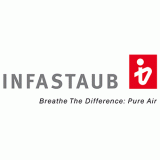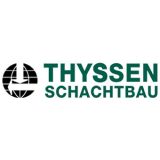What is employee onboarding?
Employee onboarding is the process during which new employees become acquainted with the organization, work processes, people, culture, and mission of our company.
Onboarding primarily involves addressing administrative formalities and introducing new employees to their workspace, work processes, team, company policies, and company culture.
A successful onboarding process aims to equip our new employees with the tools and methods that will help them become productive members of our team and integrate into the collective, social, and work environment. During onboarding, employees learn what is expected of them and how our company operates.
Ideally, an employee should be fully integrated into our company within three months in all aspects: work processes, the team, and corporate culture. Only when the employee is fully integrated can the hiring, and consequently, the onboarding process be considered successful.
Goals of onboarding:
Onboarding is important because it helps to quickly bring new employees up to speed, and it shapes their perceptions of our company, its culture, and values.
It has two main objectives:
- Increasing the speed and efficiency of a new employee's integration into the company's activities
- Ensuring the employee understands and embraces the goals, tasks, mission, and culture of our company
Thus, the primary goal of onboarding is to enhance the productivity and motivation of new employees, as well as to foster loyalty to our company. This has a positive impact on our reputation as an employer and reduces employee turnover.
Employee onboarding outcomes
A well-structured onboarding process for new employees improves employee retention and increases productivity. A successful onboarding process not only properly acquaints our new employees with the company culture, their responsibilities, and their colleagues, but also helps new employees feel more welcome in our company.
The onboarding process includes three main components that employees need to master:
- People - Building interpersonal and interdepartmental relationships within the company
- Processes - Training new employees in the basic rules, norms, regulations, and policies that define our company
- Technologies - Familiarizing employees with the technologies used by our company, training new employees in their job duties, and introducing them to the expected outcomes
How do we assess the results of onboarding?
The simplest way to check whether someone is well onboarded is to ask if they know their role, what success looks like in that role, and if they feel at home in the organization. If not, the onboarding was unsuccessful and the employee may need further support.
Successful onboarding has a number of obvious outcomes that can be identified through employee feedback. After successful onboarding, an employee:
- Has met their colleagues
- Has established relationships with their immediate supervisor
- Feels at home in the organization
- Understands their role and job
- Clearly understands their performance criteria
- Has access to all the resources needed to perform their job effectively
What do our employees expect from onboarding?
Employees have certain expectations when starting a new job. They not only want to be greeted in a friendly manner, but also want to get acquainted with the structures and their tasks. In particular, they:
- Would like to meet the team on their first day
- Would like to meet their supervisor
- Expect a fully equipped workspace and properly configured access rights to the company's infrastructure
- Have a mentor who will guide them through the work process
- Receive proper training on all necessary tools and processes
- Receive regular feedback to better evaluate their work
Onboarding stages
The onboarding period begins as soon as a candidate accepts a job offer. It ends when the employee can independently perform the job for which they were hired.
We identify 5 stages of onboarding:
- Before the first day (pre-onboarding)
- First day (orientation)
- First week
- First month
- First 90 days
Pre-onboarding
The candidate has just accepted an offer from our company. What should be done to ensure their first day at work goes smoothly?
- Send a welcome email to the employee. In this email, inform the new employee about their first day and answer questions such as "what time should I start," "where should I wait," "should I bring lunch to the office," "who can I call if I have questions," what the company dress code is, "what I will be doing on the first day," and "who will be my mentor."
- Inform the team about the new colleague, their role, and responsibilities. This creates clarity and helps the team understand which projects the new colleague will be involved in and what their tasks will be. Colleagues should be informed about:
- The new employee's name, position, responsibilities, and work schedule
- The start date and time
- Information about the new employee's immediate supervisor
- Information about the new employee's mentor
- The new employee's workspace
- Assign a mentor from experienced team members for the new employee and prepare them for interaction with the new employee, explaining their responsibilities and the new employee's adaptation plan.
- Set up the employee's email address and provide access to all necessary systems, order office access keys, and business cards.
- Prepare the workspace, which should be equipped with everything necessary: a computer, phone, mouse and keyboard, office supplies. Equally important, the workspace should be clean and free of traces from previous employees. All equipment should be supplied with the necessary software and updated, so as not to waste time on this during the first workday.
- Request all necessary documents from the new employee for processing, prepare the employment contract and orders, NDA and other formal documents, so as not to waste time on their processing on the first workday.
- It is important to plan introductory briefings on safety, fire safety, and personal data protection, etc. To make the training as quick as possible.
- It would not be superfluous to prepare a welcome package for the employee, containing a convenient daily planner, a cup for drinks, branded corporate clothing, etc.
First day
At this important stage of adaptation, the employee should receive as much information as possible about their new job. It is also essential for the first day to be as enjoyable as possible for the employee because the first impression matters and forms future professional relationships.
The first day includes a tour of the office and getting to know colleagues and managers. The employee should create a feeling that they can talk to anyone at any time and should not be shy about asking questions. For successful adaptation on the first day, it should include:
- The direct manager should meet the employee at the entrance of the office and be sure to greet them.
- After the greeting, it is necessary to discuss the plan for the upcoming day with the employee.
- The next step is an office tour. Show the kitchen, how the coffee machine works, where the restrooms are, introduce the offices of colleagues, meeting rooms, the printer, shredder, and so on.
- Getting acquainted with colleagues. Here, we introduce the new employee to everyone in the company, usually during the office tour.
- Later that day, the employee is introduced to the 90-day adaptation plan, the training plan, the mentor, the direct manager, and the team members they will be working with.
- Company presentation. This is a presentation by the company founders, mainly dedicated to how the company works in terms of teams and roles, as well as its culture. If a welcome package is provided, now is the time to hand it over. Also, at this point, it is necessary to hand over business cards.
- Processing formal documents. On the first day, all formal documents should be signed, including the employment contract, work order, NDA, consent to personal data processing, documents on material responsibility, documents related to medical and pension provision, salary accrual, and tax payment calculation.
- On the first day, conduct a basic safety and fire safety briefing for the employee, showing where fire exits, fire extinguishers, etc., are located.
- Show the employee their new workspace, provide passwords for the computer, email, Wi-Fi, set up an email signature, demonstrate how to use the printer and scanner, and the corporate messenger. Training on the use of specialized programs, ERP, and others is not conducted on the first day.
- At the end of the workday, it is important for the manager to have a short and informal conversation with the employee about their impressions of the first day.
First week
- During the first week, introduce the employee to all team members who were not in the office on the day of the tour, and hold personal meetings with department managers and colleagues the new employee will be working with.
- Take a photo of the employee for posting on the website, prepare information about the employee and publish it. This is important for remote colleagues, clients, and partners. Also, add the employee to the birthday calendar to not miss anything.
- Provide the employee with company policies to study. Conduct briefings on personal data protection, rules for external and internal communication, compliance, quality control, rules for interacting with suppliers, and inform them about the plan for upcoming training seminars.
- Provide the employee with templates for internal documents - vacation requests, expense compensation, sick leave, and conduct a briefing on the rules for processing all procedures.
- Together with the mentor, training on the use of the company's internal systems, such as ERP and others, should be conducted during the first week.
- For the first three months, a training plan and control meetings should be agreed upon with the new employee. During the adaptation period, these meetings should be held at least once a month, and in the first month - weekly.
- At the end of the first week, hold a personal meeting with the employee and discuss the adaptation process. As control questions, you can use a list of tasks for the first week.
First month
The first month of the adaptation period is dedicated to getting acquainted with new colleagues, familiarizing oneself with tasks, technologies, and organization, and setting goals.
During the initial meeting with the manager, it is necessary to agree on the new employee's goals and training and development plan within the company.
By the end of the first month, the employee should master the rules for using the main systems in the company, the basics of communication, and the main policies, and should generally be able to participate in the implementation of projects under the supervision of a mentor.
It is essential to regularly hold joint meetings with the employee, their mentor, or manager to track the progress of their adaptation and timely identify the problems and needs of the new employee, as well as provide them with feedback.
First 90 days
The employee adaptation process should generally be completed by the end of the third month. By this time, the employee should have mastered all three components of adaptation:
- The employee should build interpersonal and interdepartmental relationships within the company. They should know their managers and colleagues and be familiar with the organizational structure of the company.
- Master all company policies, norms, and regulations, as well as share the company's goals and values.
- Be familiar with their job responsibilities, understand the expected results, and possess all the necessary tools and skills to independently perform tasks.
It is necessary to conduct a joint final "adaptation" meeting with the employee and their manager or mentor and evaluate the employee's results and the adaptation process. Make sure that the employee, mentor, manager, and the company have met the set goals, and if not, develop measures to address any shortcomings.
Of course, the first three months are not the end of an employee's development in our company. The process of development, training, and growth of employees should be continuous.
We provide our people with the opportunity to acquire and improve their qualifications in a way that is convenient for them. We offer on-site training worldwide. We are working to ensure that everyone has the skills needed for work today and tomorrow.









































